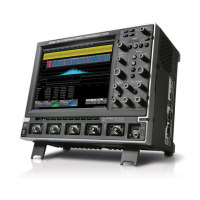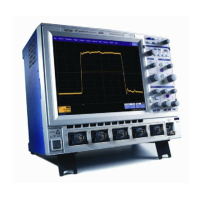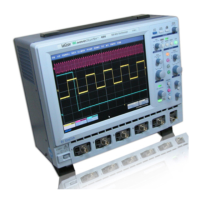X-Stream Operator’s Manual
WM-OM-E Rev I 417
Noise Parameters
Disk noise parameters enable parameter measurements of media signal-to-noise (msnr), residual
(electronics) signal-to-noise (rsnr), and the ratio of media to residual signal-to-noise (m_to_r). The
calculation of all three parameters is based on the distribution of the averaged Viterbi input
samples.
• msnr can be applied to any single-frequency, sector-based data pattern. The
single-frequency data will be sampled at the peaks (maxima), zero crossings, and troughs
(minima). Any deviations from the ideal sample points will be a result of noise. By
performing multiple reads, random noise can be averaged away. With this measurement,
the repeating media noise level can be derived by msnr.
• rsnr can be applied to any single-frequency, sector-based data pattern. The
single-frequency data will be sampled at the peaks (maxima), zero-crossings, and troughs
(minima). Any deviations from the ideal sample points will be a result of noise. By
performing multiple reads, random noise can be quantified. With this measurement, the
non-repeating residual (electronics) noise level can be derived by rsnr.
• m_to_r can be applied to any single-frequency, sector-based data pattern. The m
• snr is compared with the rsnr. The resulting ratio indicates whether the signal is dominated
by media noise if it is greater than 1.00, or dominated by residual (electronics) noise if less
than 1.00.
Note: Although the math on the following pages is simplified by assuming a large number of sweeps, inside the DDA it
calculates what the final value should be from 2 or more sweeps. The value will become more stable as more sweeps are
taken, but its mean should not change. Therefore, a large number of sweeps is not required for unbiased values.
